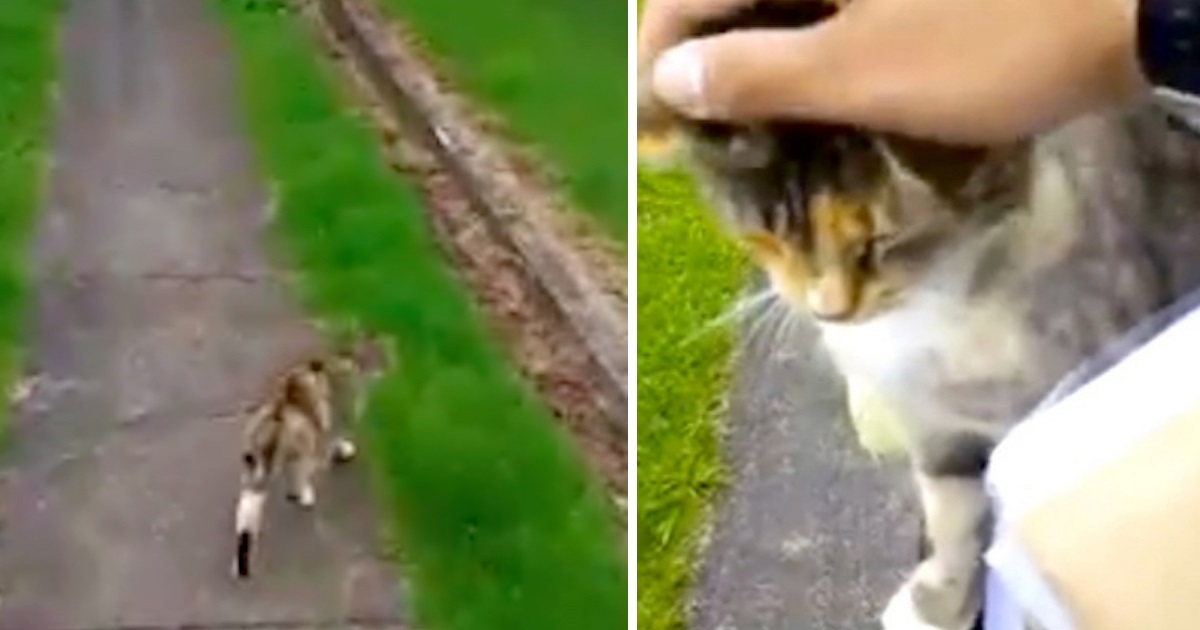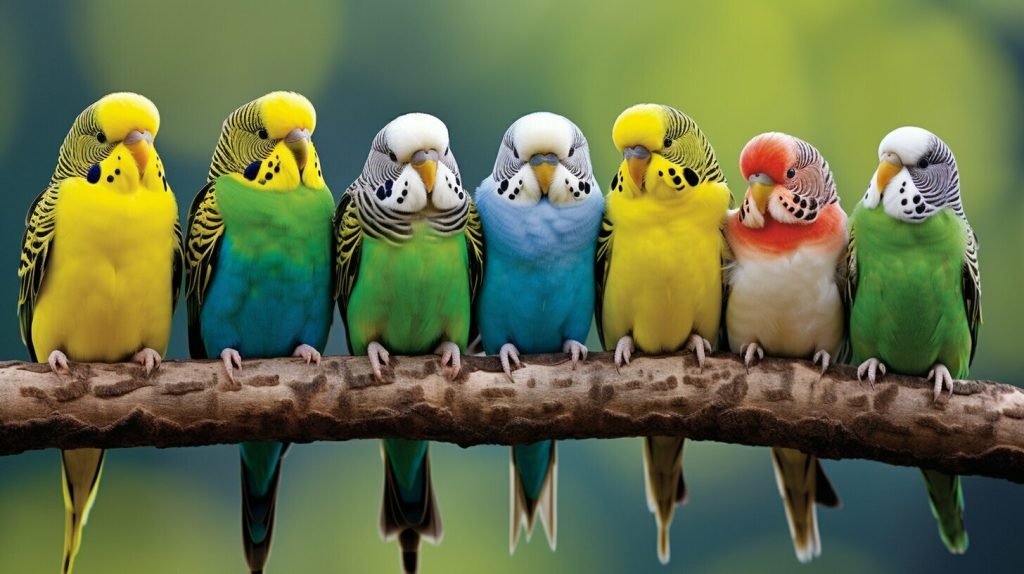 Parakeets, belonging to the parrot family, are small to medium-sized parrots with long, tapered tail feathers. They are highly social birds and make wonderful pets. With over 120 species and sub-species, parakeets come in a variety of colors and have outgoing personalities. To ensure their well-being, they require a stimulating environment, plenty of activities, and are best kept in pairs or groups. Each type of parakeet has specific housing, care, and feeding requirements, as well as unique behaviors and activity needs.
Parakeets, belonging to the parrot family, are small to medium-sized parrots with long, tapered tail feathers. They are highly social birds and make wonderful pets. With over 120 species and sub-species, parakeets come in a variety of colors and have outgoing personalities. To ensure their well-being, they require a stimulating environment, plenty of activities, and are best kept in pairs or groups. Each type of parakeet has specific housing, care, and feeding requirements, as well as unique behaviors and activity needs.
From the vibrant Budgerigar Parakeet to the gentle Plum-headed Parakeet, there is a parakeet breed for everyone. Whether you’re interested in the striking blue plumage of the Blue Parakeet or the calm demeanor of the Bourke’s Parakeet, these charming birds can bring joy and companionship to any home. Providing proper care, a balanced diet, regular mental stimulation, and social interaction is vital to ensure the long and happy lives of these beloved pets.
Budgerigar Parakeet
The Budgerigar Parakeet, also known as the Budgie, is one of the most popular types of parakeets. Native to Australia, this parakeet breed is known for its vibrant colors and playful personality. Budgies are highly intelligent birds that can be trained to perform tricks, making them a delight to have as pets.
One of the standout features of Budgerigar Parakeets is their wide range of colors. They come in various shades of blue, yellow, and green, allowing bird enthusiasts to choose the color that appeals to them the most. These colorful plumages, coupled with their sociable and interactive nature, make Budgies a beloved choice for pet owners.
When it comes to care, Budgerigar Parakeets require a well-balanced diet, plenty of exercise, and regular mental stimulation. A diet consisting of high-quality pellets, fresh fruits, vegetables, and occasional seeds is essential for their overall health. Providing a spacious cage with toys and activities is also crucial for keeping them entertained and mentally stimulated.
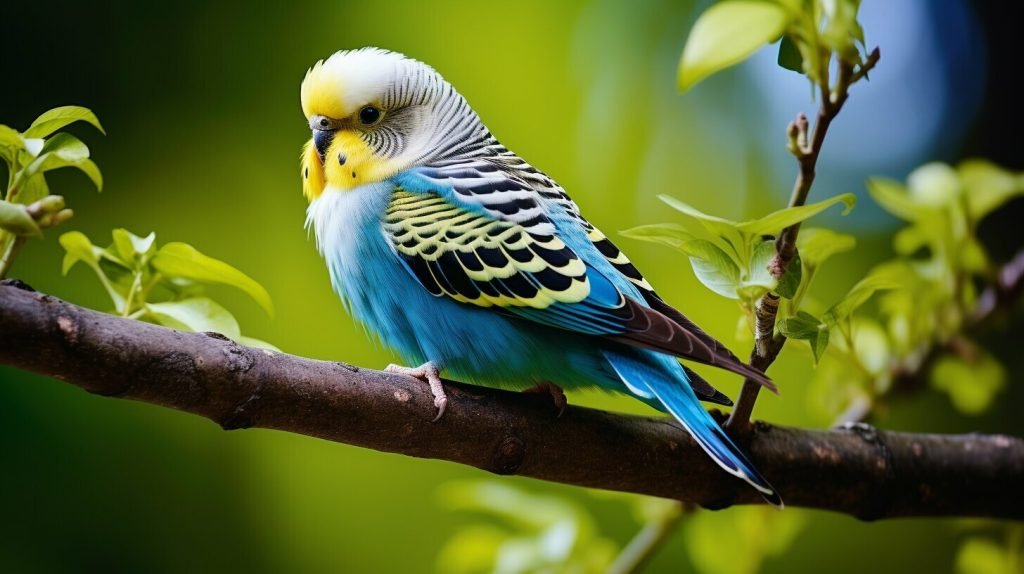
Overall, Budgerigar Parakeets are a wonderful parakeet breed to have as companions. With their vibrant colors, playful personality, and trainable nature, they bring joy and entertainment to households. As with any pet, it’s important to provide them with proper care and attention to ensure they live a happy and healthy life.
Monk Parakeet
The Monk Parakeet, also known as the Quaker Parrot, is a popular parakeet variety. It is native to South America but has established feral populations in various parts of the world. Monk Parakeets are known for their green plumage and distinctive gray face and chest. They are highly social birds and are known for their intelligence and ability to mimic human speech. Monk Parakeets are playful and require a variety of toys and activities to keep them mentally stimulated. They have an average lifespan of 20-30 years and require a well-balanced diet consisting of pellets, fruits, vegetables, and seeds.
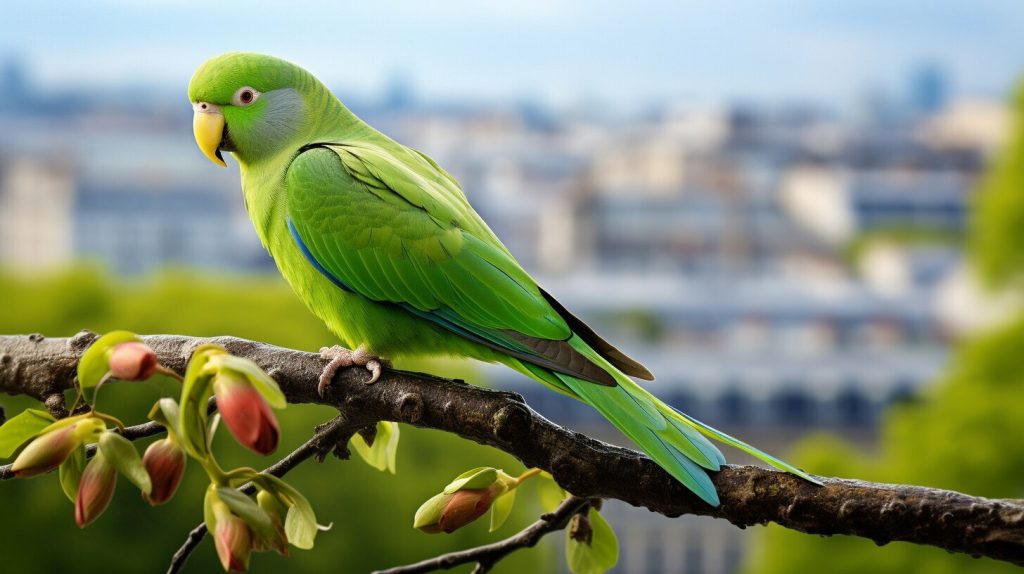
Monk Parakeets are often kept as pets due to their friendly nature and entertaining behavior. They enjoy interacting with their human companions and can form strong bonds. These parakeets thrive in a stimulating environment with plenty of social interaction and mental stimulation. Providing them with a spacious cage, filled with toys and climbing structures, will help keep them active and engaged.
In addition to their playful nature, Monk Parakeets are known for their ability to mimic human speech. They have a wide vocal range and can learn to imitate words and phrases with practice and training. This makes them a popular choice for parakeet owners who enjoy teaching their pets to talk.
When it comes to their diet, Monk Parakeets require a well-rounded and balanced meal plan. A combination of high-quality pellets, fresh fruits and vegetables, and a variety of seeds will provide them with the necessary nutrients for optimal health. It’s essential to avoid feeding them foods that are toxic to birds, such as avocados and chocolate.
In summary, the Monk Parakeet is a popular and intelligent parakeet variety known for its green plumage, friendly nature, and ability to mimic human speech. Their playful behavior and social nature make them excellent pets for those looking for an interactive and entertaining companion.
Blue Parakeet
The Blue Parakeet, also known as the Indian Ringneck Parakeet, is a stunningly beautiful parakeet species. With its brilliant blue plumage, it stands out among other parakeet varieties. Native to Asia, Blue Parakeets are highly social birds that thrive on regular interaction and mental stimulation. They have a lifespan of 25-30 years, making them a long-term commitment for bird enthusiasts.
To meet the needs of your Blue Parakeet, provide a spacious cage with plenty of room for them to fly and exercise. It’s essential to offer a well-balanced diet consisting of fruits, vegetables, seeds, and pellets. Blue Parakeets are known for their ability to mimic human speech, so consider providing them with an environment that encourages vocalization and learning.
When identifying a Blue Parakeet, look for their vibrant blue plumage, which is distinct and eye-catching. Their colors can vary, from bright royal blue to a slightly lighter shade. These colorful birds will bring joy and beauty to any avian enthusiast’s home.
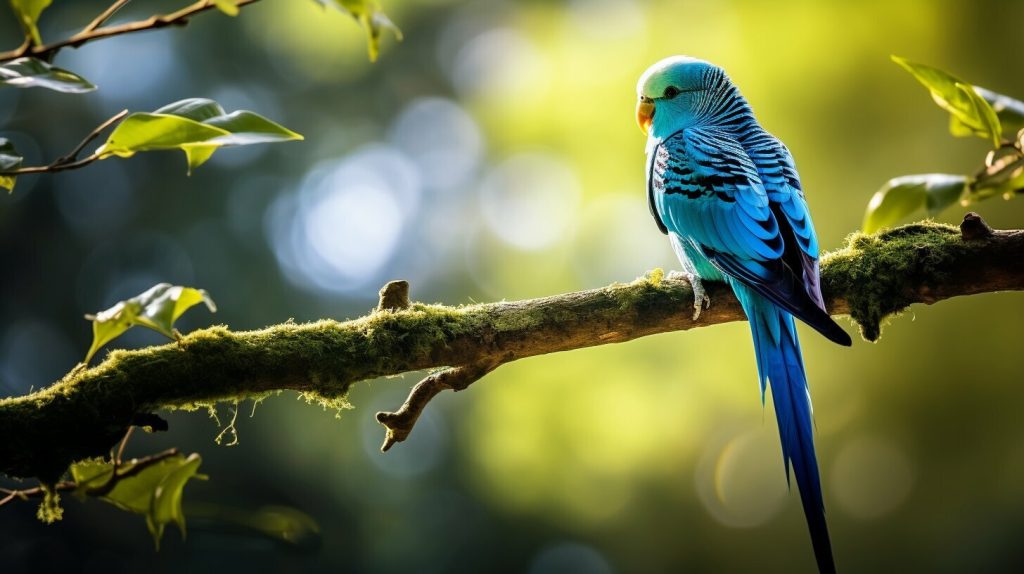
Key Features of Blue Parakeets:
- Stunning blue plumage
- Highly social and intelligent
- Requires regular interaction and mental stimulation
- Lifespan of 25-30 years
- Can mimic human speech
“The Blue Parakeet’s striking blue plumage adds a vibrant touch to any bird lover’s home.” – Anonymous
Yellow Parakeet: A Vibrant Addition to Your Parakeet Collection
If you’re looking to add a burst of color to your parakeet collection, look no further than the Yellow Parakeet. Also known as the Canary Parakeet, this breed is native to Australia and is highly sought after for its vibrant yellow plumage. With its bright and cheerful appearance, the Yellow Parakeet is sure to catch the eye and bring a ray of sunshine into your home.
The Yellow Parakeet is not only visually stunning but also known for its social and intelligent nature. These birds thrive on interaction and require regular human companionship to stay mentally stimulated. Providing a spacious cage with plenty of toys and activities will ensure that your Yellow Parakeet remains happy and content.
When it comes to their diet, Yellow Parakeets should be fed a well-balanced meal consisting of pellets, seeds, fruits, and vegetables. This diverse diet will provide them with the necessary nutrients to maintain their vibrant plumage and overall health. Additionally, the Yellow Parakeet is known for its melodious singing. With proper training, these birds can learn to perform tricks and mimic human speech, making them even more entertaining companions.
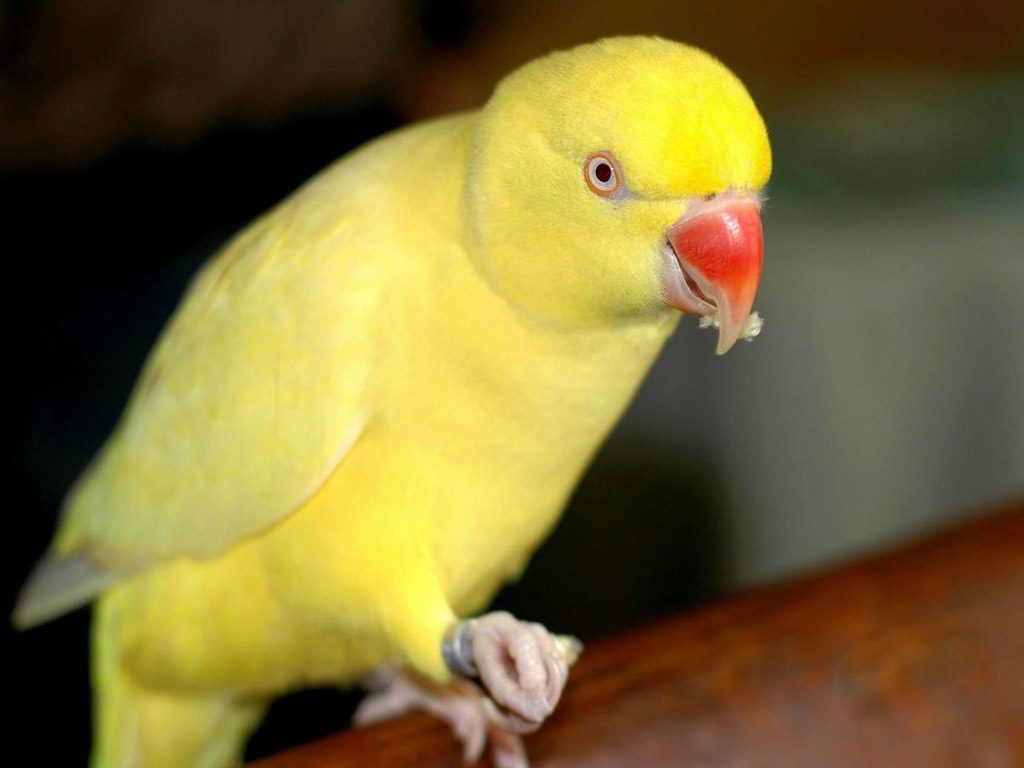
| Personality | Diet | Life Expectancy |
|---|---|---|
| Friendly and social | Pellets, seeds, fruits, vegetables | 10-15 years |
Adding a Yellow Parakeet to your flock will not only enhance the visual appeal of your collection but also bring joy and companionship into your life. These birds have a lifespan of 10-15 years, providing years of delightful chirps and playful antics. Whether you’re a seasoned parakeet owner or a beginner, the Yellow Parakeet is a fantastic choice for anyone looking to brighten up their home with a beautiful and sociable bird.
Plain Parakeet
The Plain Parakeet, also known as the Bourke’s Parakeet, is a unique parakeet species known for its soft, pastel-colored plumage. Native to Australia, these birds have a calm and docile nature, making them excellent pets for those seeking a peaceful companion. Unlike some other parakeet breeds, Plain Parakeets may not be known for their talking abilities, but they have many other endearing qualities.
Plain Parakeets are highly social birds and thrive on regular interaction with their human companions. They enjoy being a part of the family and require a stimulating environment with plenty of mental and physical activities. To keep them happy and healthy, provide a spacious cage with perches and toys to keep them entertained. Offering a varied diet consisting of seeds, fruits, and vegetables will ensure their nutritional needs are met.
Plain Parakeets are not often seen in pet stores or aviaries, but they are worth considering if you’re looking for a gentle and calm bird that will bring joy to your home. Their beautiful plumage and peaceful nature make them a lovely addition to any bird lover’s family.
With an average lifespan of 10-15 years, Plain Parakeets can provide many years of companionship. Their gentle temperament and relatively low maintenance requirements make them an ideal choice for both new and experienced bird owners. Whether you’re looking for a parakeet with unique colors or a bird that will bring tranquility to your life, the Plain Parakeet is an excellent option.
| Common Name | Scientific Name | Origin | Average Lifespan |
|---|---|---|---|
| Plain Parakeet | Neopsephotus bourkii | Australia | 10-15 years |
| Budgerigar Parakeet | Melopsittacus undulatus | Australia | 5-8 years |
| Monk Parakeet | Myiopsitta monachus | South America | 20-30 years |
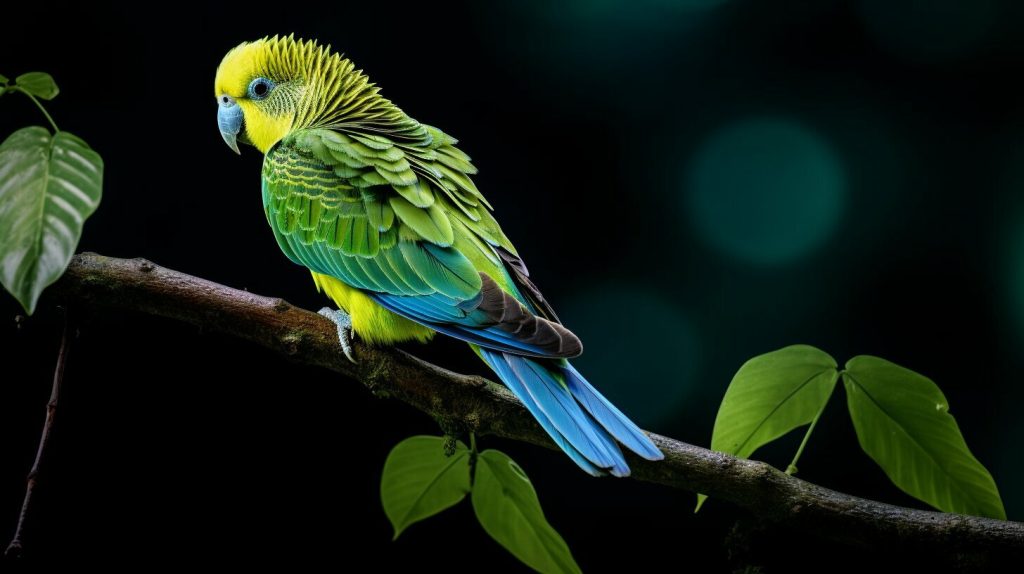
Rose-ringed Parakeet
The Rose-ringed Parakeet, also known as the Ring-necked Parakeet, is a popular parakeet breed known for its colorful plumage and distinctive ring around its neck. This parakeet species is native to Africa and Asia and is highly sought after by bird enthusiasts for its beauty and intelligence.
With vibrant greens, yellows, blues, and reds, the Rose-ringed Parakeet is a visually striking bird that captures attention wherever it goes. Its vibrant colors make it a favorite among pet owners who are looking for a visually appealing and charismatic companion. In addition to its stunning appearance, the Rose-ringed Parakeet is highly intelligent and can excel at learning tricks and mimicking human speech.
Proper care and attention are essential for the well-being of the Rose-ringed Parakeet. These birds thrive in spacious cages with plenty of toys and activities to keep them mentally stimulated. A varied diet consisting of pellets, fruits, vegetables, and seeds is necessary to meet their nutritional needs. Regular interaction and socialization with their human companions are crucial for their mental and emotional health.
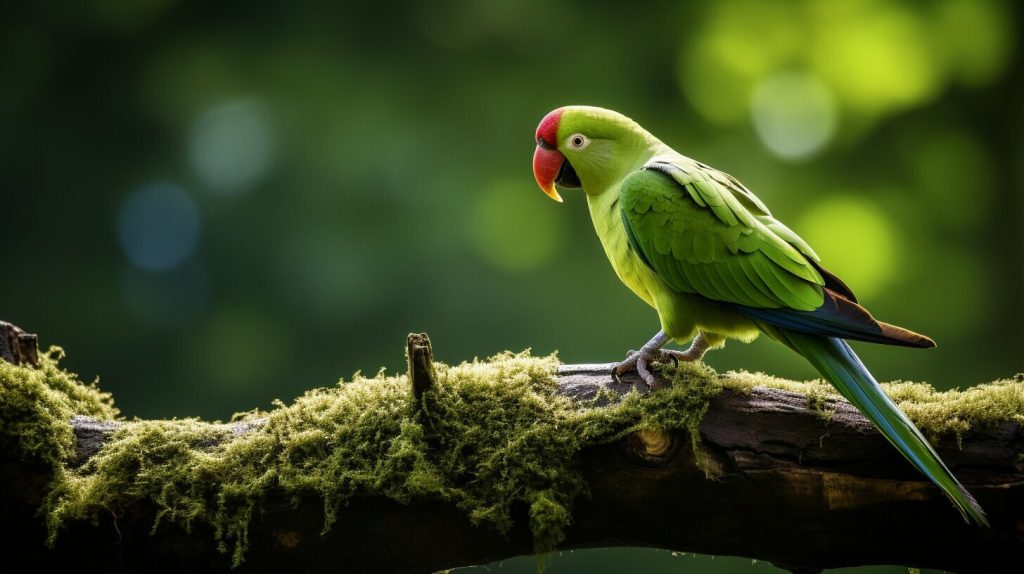
| Key Information | Details |
|---|---|
| Species | Rose-ringed Parakeet |
| Native Region | Africa and Asia |
| Average Lifespan | 20-30 years |
| Diet | Pellets, fruits, vegetables, seeds |
| Personality Traits | Intelligent, can mimic human speech, social |
As with any pet, it’s important to remember that owning a Rose-ringed Parakeet is a long-term commitment. These birds can live for several decades, so potential owners should be prepared for the responsibility and care that comes with providing a loving and nurturing environment. With the right care, the Rose-ringed Parakeet can be a delightful and cherished companion for many years to come.
Derby Parakeet: A Unique Parakeet Breed
About the Derby Parakeet
The Derby Parakeet, also known as the Derbyan Parakeet, is a stunning parakeet breed native to Asia. With its vibrant green plumage and distinctive red beak, the Derby Parakeet is truly a sight to behold. These parakeets are highly social and intelligent birds, making them a popular choice among bird enthusiasts. Despite their striking appearance, Derby Parakeets are known for their gentle nature and calm demeanor.
Derby Parakeets require regular interaction with their human companions to thrive. They enjoy spending time outside of their cages and benefit from stimulating activities and toys. These parakeets also require a well-balanced diet consisting of pellets, fruits, vegetables, and seeds to ensure their nutritional needs are met.
Appearance and Lifespan
The Derby Parakeet features a predominantly green plumage with hints of blue on its wings and a vibrant red beak. They have an average lifespan of 20-30 years when provided with proper care and nutrition. These parakeets are medium-sized, reaching a length of 16-18 inches from beak to tail.
Distinctive Behaviors and Care Requirements
One of the standout features of the Derby Parakeet is its ability to mimic human speech. With patience and consistent training, these intelligent birds can learn to imitate words and phrases. They also have a curious nature and enjoy exploring their surroundings, making it important to provide them with a safe and enriching environment.
Derby Parakeets thrive in a spacious cage with plenty of room to spread their wings. It’s also essential to provide them with mental stimulation through toys, puzzles, and interaction with their human companions. Regular veterinary check-ups are recommended to ensure their overall health and well-being.
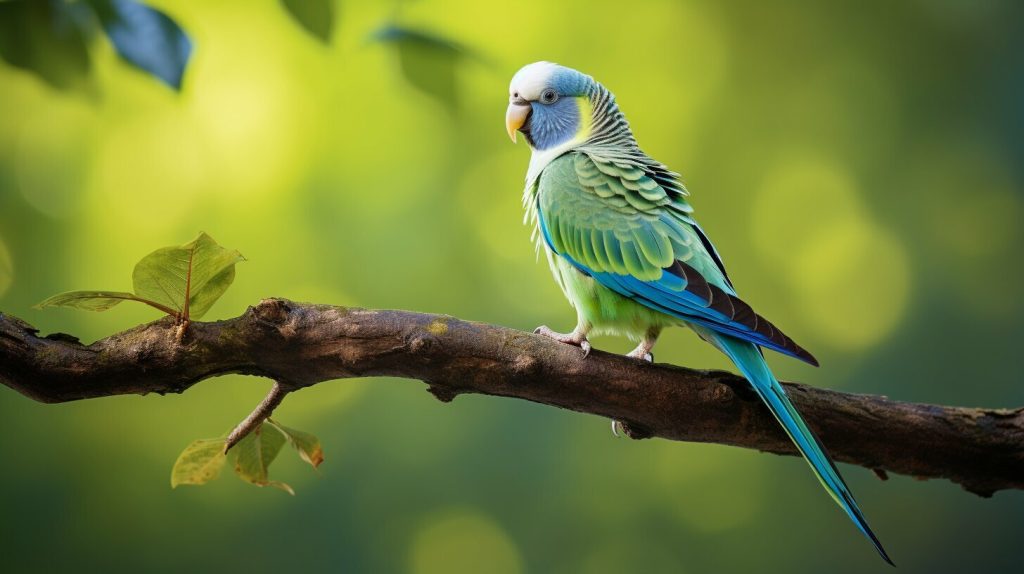
| Key Features | Care Requirements |
|---|---|
| Distinctive green plumage with hints of blue | Regular interaction and mental stimulation |
| Vibrant red beak | Well-balanced diet of pellets, fruits, vegetables, and seeds |
| Ability to mimic human speech | Spacious cage with room to explore |
| Curious and intelligent nature | Regular veterinary check-ups |
Overall, the Derby Parakeet is a unique and captivating parakeet breed. With their striking appearance and gentle temperament, these birds make wonderful companions for those willing to provide them with the care and attention they need.
Plum-headed Parakeet: A Colorful and Social Parakeet Species
The Plum-headed Parakeet is a delightful parakeet species that adds a burst of vibrant color to any aviary or bird lover’s home. Known for its striking plumage, with a gray head and plum-colored body, the Plum-headed Parakeet is a visual treat. Not only is it visually stunning, but it is also highly social and intelligent, making it a wonderful companion for those looking to add a feathered friend to their lives.
These parakeets thrive on social interaction and require regular engagement and mental stimulation. They enjoy interacting with their human companions and can be trained to talk and mimic human speech. Their ability to mimic sounds and words adds an entertaining element to their presence. As a result, they are sure to captivate the hearts of bird enthusiasts and families alike.
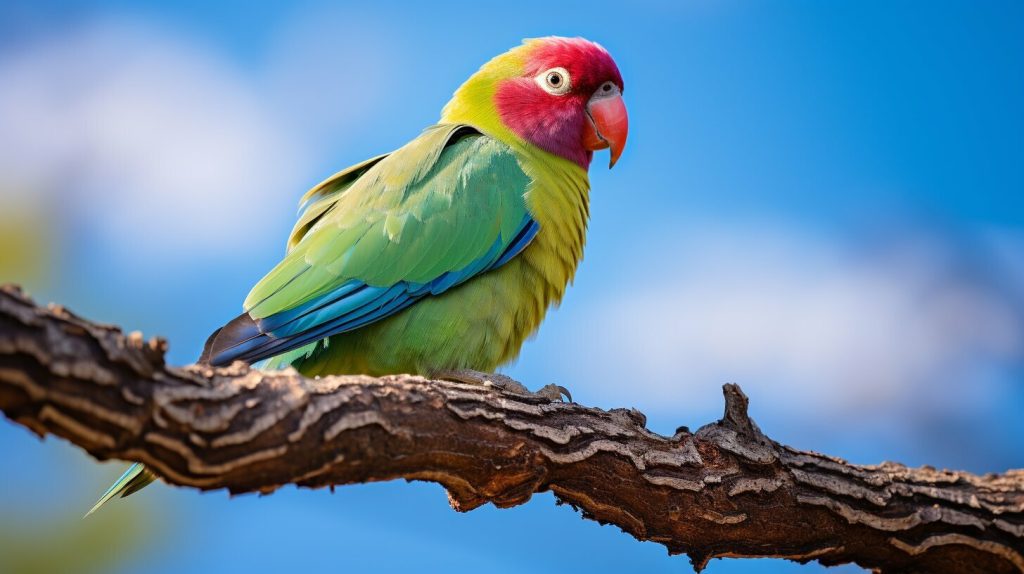
A Well-Rounded Diet and Enriching Environment
To keep Plum-headed Parakeets healthy and happy, it is crucial to provide them with a well-rounded diet. This should consist of high-quality pellets, a variety of fresh fruits and vegetables, and a selection of seeds. A balanced diet will ensure they receive the necessary nutrients to thrive. It is important to note that seeds should only make up a small portion of their diet to avoid nutritional imbalances.
In addition to a nutritious diet, Plum-headed Parakeets also require an enriching environment. This includes a spacious and secure cage with plenty of toys, perches, and mental stimulation. They love exploring and playing, so providing a variety of toys will keep them entertained and mentally stimulated. It is important to note that Plum-headed Parakeets are active birds and need daily exercise outside of their cages to maintain their physical well-being.
Brown Parakeet: A Popular and Colorful Parakeet Variety
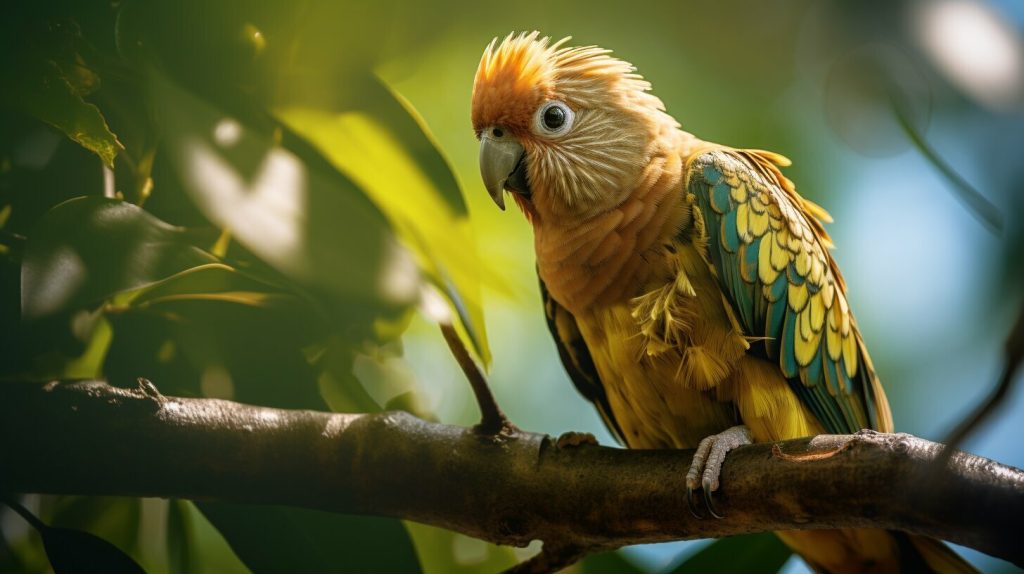
When it comes to parakeet colors, the Brown Parakeet – also known as the Mustached Parakeet – stands out as a popular and visually striking variety. Native to Southeast Asia, these parakeets are known for their unique brown plumage and distinctive mustache-like markings on their faces. The combination of their vibrant coloring and captivating features makes them a favorite among bird enthusiasts and pet owners.
Brown Parakeets are highly social birds and thrive on regular interaction and mental stimulation. Their intelligence and ability to mimic human speech make them fascinating companions. With proper care and attention, Brown Parakeets can live for an average of 20-25 years, bringing joy and entertainment to their owners.
“Brown Parakeets are not only beautiful but also intelligent and capable of mimicking human speech. Their distinctive brown plumage and mustache-like markings make them a unique and captivating addition to any bird lover’s home.” – Bird enthusiast
Table: Brown Parakeet Care and Characteristics
| Care Needs | Characteristics |
|---|---|
| Interaction | Highly social birds that require regular social interaction and mental stimulation. |
| Lifespan | Average lifespan of 20-25 years with proper care and attention. |
| Diet | A well-balanced diet consisting of pellets, seeds, fruits, and vegetables. |
| Talking Abilities | Can be trained to mimic human speech and learn various tricks. |
Providing a spacious cage, plenty of toys, and mental stimulation is crucial for the well-being of Brown Parakeets. They thrive in a stimulating environment that allows them to explore, play, and interact with their surroundings. Regular vet check-ups and a balanced diet are necessary to ensure their health and longevity.
Overall, the Brown Parakeet is a popular and captivating parakeet variety that brings beauty, intelligence, and entertainment to any bird lover’s home. With their distinctive coloring, social nature, and ability to mimic human speech, Brown Parakeets are a delightful addition to any family.
Anthracite Parakeet
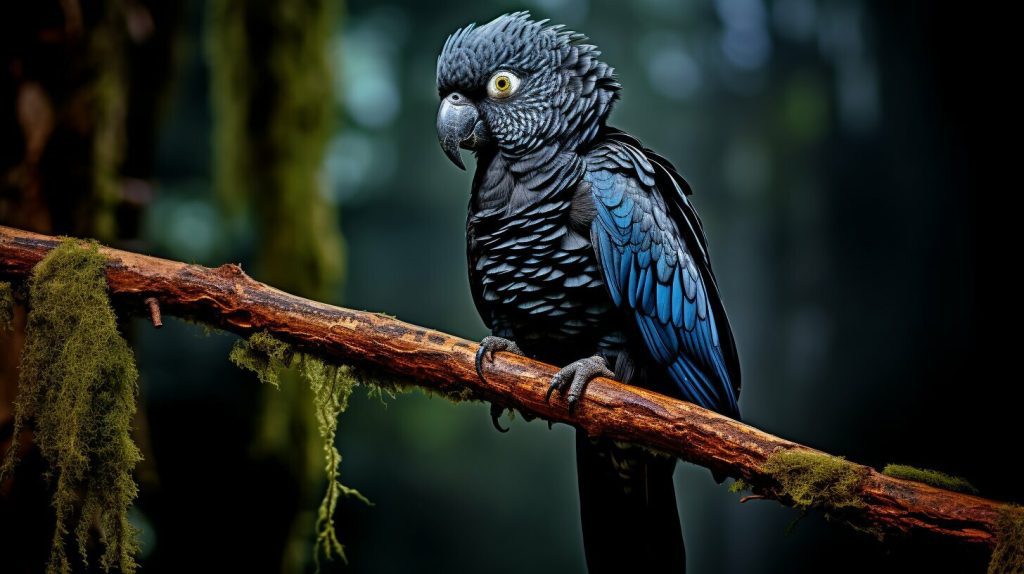
I am excited to introduce you to the Anthracite Parakeet, also known as the Blossom-headed Parakeet. This beautiful parakeet species is native to Southeast Asia and is known for its dark plumage and vibrant blue head. With its striking appearance and charming personality, the Anthracite Parakeet is a popular choice among bird enthusiasts.
The Anthracite Parakeet is highly social and requires regular interaction and mental stimulation. They thrive in a spacious cage with plenty of toys and activities to keep them entertained. These intelligent birds have an average lifespan of 20-25 years and require a well-rounded diet consisting of pellets, seeds, fruits, and vegetables to maintain their health and vitality.
One of the remarkable features of the Anthracite Parakeet is its ability to mimic human speech. These talented birds can be trained to talk and are known for their ability to mimic various sounds and phrases. Their impressive vocal abilities make them a delightful companion for those seeking an interactive and engaging pet.
In summary, the Anthracite Parakeet is a captivating bird with its stunning dark plumage and vibrant blue head. With their social nature, intelligence, and ability to mimic human speech, these parakeets make wonderful pets for bird lovers. If you’re considering a parakeet breed that will bring beauty and entertainment to your home, the Anthracite Parakeet is an excellent choice.
Bourke’s Parakeet
Bourke’s Parakeet, also known as the Bourke’s Parrot, is a delightful parakeet species native to Australia. These gentle birds are beloved for their soft, pastel-colored plumage and calm demeanor. Bourke’s Parakeets make excellent pets due to their peaceful nature and ability to form strong bonds with their human companions.
One of the distinguishing features of Bourke’s Parakeets is their striking range of colors. From vibrant pinks and yellows to warm peach tones, their plumage adds a touch of beauty to any aviary or home. These parakeets are not known for their talking abilities, but their quiet and affectionate nature makes up for it.
Behavior and Care
Bourke’s Parakeets are highly social birds and thrive in the company of their human companions. They enjoy gentle interaction and appreciate a spacious cage with plenty of toys and perches for exercise and mental stimulation. These birds have an average lifespan of 10-15 years, so providing them with a well-rounded diet consisting of seeds, fruits, and vegetables is essential for their health and longevity.
Due to their calm temperament, Bourke’s Parakeets can coexist peacefully with other bird species, making them a great addition to mixed aviaries. Their docile nature also makes them a suitable choice for families with children or individuals seeking a friendly and low-maintenance pet.
Whether you are an experienced bird owner or a first-time parakeet enthusiast, Bourke’s Parakeets offer a wonderful opportunity to enjoy the beauty and companionship of these charming creatures. Their peaceful and affectionate nature, combined with their stunning colors, make Bourke’s Parakeets a popular choice among bird enthusiasts worldwide.
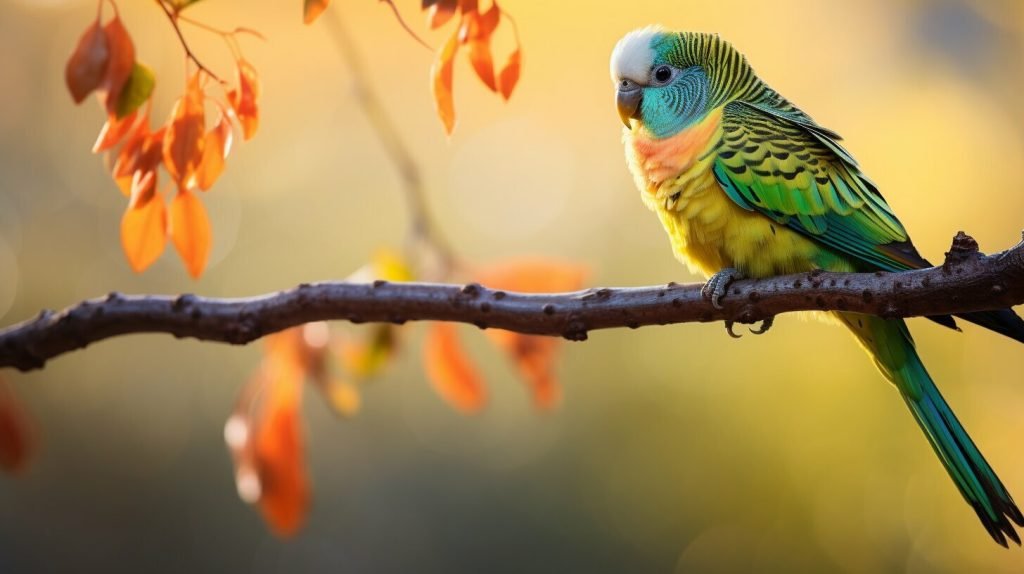
| Characteristic | Description |
|---|---|
| Species | Bourke’s Parakeet |
| Origin | Australia |
| Plumage Colors | Range of soft pastel colors including pink, yellow, and peach |
| Average Lifespan | 10-15 years |
| Diet | Seeds, fruits, and vegetables |
| Social Behavior | Highly social, forms strong bonds with human companions |
| Talking Ability | Not known for talking abilities |
Mustached Parakeets
Mustached Parakeets, also known as Brown Parakeets, are a unique and captivating breed of parakeets native to Southeast Asia. They are known for their stunning brown plumage and distinctive mustache-like markings on their face, which sets them apart from other parakeet breeds.
These parakeets are highly social and intelligent birds, making them excellent companions for bird enthusiasts. They thrive on regular interaction and mental stimulation, and their engaging personalities make them one of the best parakeet species for those seeking an interactive and entertaining pet.
Mustached Parakeets have an average lifespan of 20-25 years, making them a long-term commitment for pet owners. To ensure their well-being, they require a well-rounded diet consisting of pellets, seeds, fruits, and vegetables. Additionally, regular physical exercise and mental stimulation, such as providing a variety of toys and puzzles, are essential for their overall health and happiness.
These parakeets are also known for their ability to mimic human speech, making them highly trainable. With patience and consistent training, Mustached Parakeets can learn to imitate words and phrases, delighting their owners with their communication skills. Their intelligence and talking abilities make them a favorite among parakeet enthusiasts.
The Personality and Characteristics of Mustached Parakeets
Mustached Parakeets are known for their charming and playful nature. They are highly social birds, forming strong bonds with their human companions. These parakeets thrive on interaction and attention, and they can develop a deep emotional connection with their owners.
In addition to their engaging personalities, Mustached Parakeets are also highly intelligent birds. They are curious and enjoy exploring their surroundings, making it important to provide them with a stimulating environment that includes plenty of toys and activities to keep their minds occupied.
With their distinctive appearance, sociable nature, and intelligence, Mustached Parakeets are an excellent choice for bird lovers looking for a unique and interactive pet. Their beautiful plumage and charming personalities make them a captivating addition to any home or aviary.
| Characteristics | Details |
|---|---|
| Species | Mustached Parakeet |
| Origin | Southeast Asia |
| Plumage | Brown with mustache-like markings on the face |
| Lifespan | 20-25 years |
| Diet | Pellets, seeds, fruits, and vegetables |
| Trainability | Highly trainable, can mimic human speech |
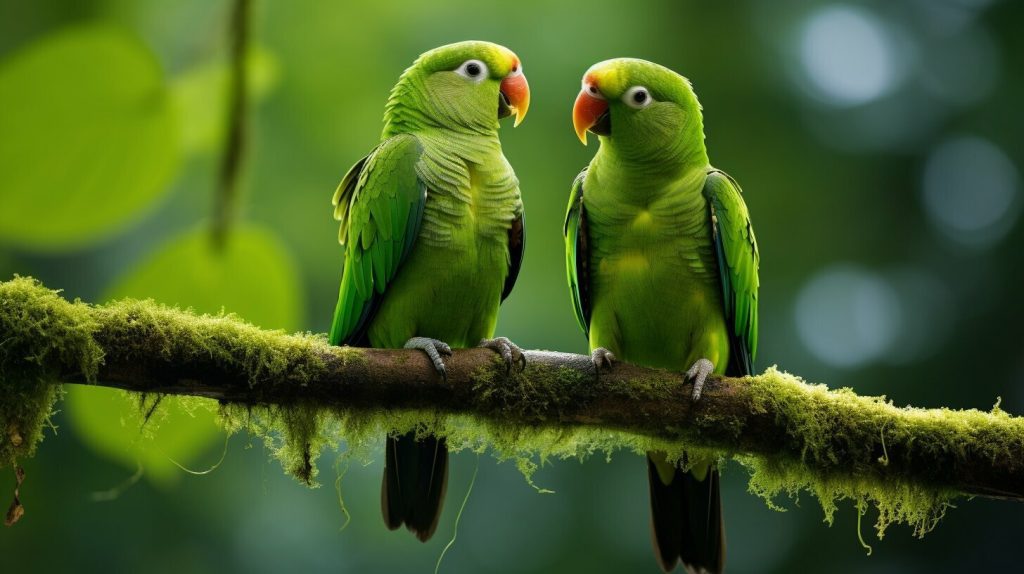
Conclusion
Parakeets are fascinating creatures with a wide range of species and sub-species. From the vibrant Budgerigar to the gentle Bourke’s Parakeet, there is a parakeet breed to suit every pet owner’s preferences. These colorful birds bring joy and companionship to our lives.
When caring for parakeets, it is crucial to provide them with a well-balanced diet, regular mental stimulation, and social interaction. This will ensure their physical and emotional well-being. Parakeets thrive in a stimulating environment with plenty of activities to keep them entertained and engaged.
With the right care and attention, parakeets can live long and happy lives as cherished companions. Their unique personality traits and beautiful plumage make them a delightful addition to any household. So, if you’re considering adding a parakeet to your family, you’ll be rewarded with years of love and companionship.


